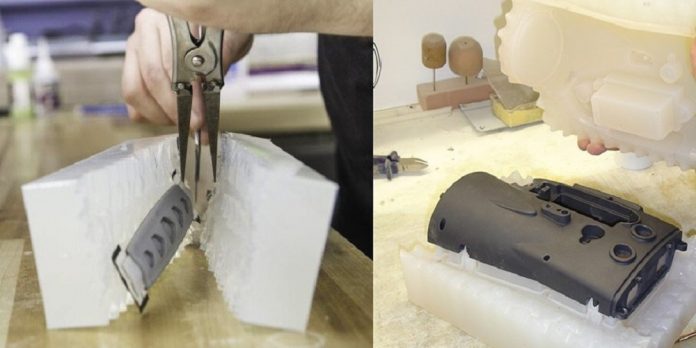Every once in a while, or more regularly than that, there is a need for an alternative material that is low-cost but provides the needed material performance. One such material is urethane casting.
In every 3D prototyping process, material selection is important for quality and to make sure that you are not paying too much for a certain material.
Urethane casting or molding gives you a cost-effective and low-volume production of parts as an alternative.
This alternative is known as polyurethane, which is the parent material from which urethane is gotten. Polyurethane is a polymer made up of organic units that are joined by urethane links.
When you want to fabricate rubber-like parts or plastic, the best choice is urethane casting. This is because of its versatility among other reasons.
In rapid prototyping, urethane casting is also used among the production processes in fabrication. This has been going on for many years and has been used to create many high-quality design parts.
What Is Urethane Casting?
Urethane casting is the fabrication process that makes use of polyurethane materials to cast components.
In this fabrication process, temporary polymer molds are used. These molds are made from a master part.
The urethane casting process offers the choice of matching the production materials. To do this, the mechanical properties of the materials have to match.
The Advantages of Urethane Casting
1. The Flexibility of Design
Urethane molding allows for soft tool molds or silicone molds to be used to fabricate cast pieces of urethane. This makes it possible to make design changes on the go.
Design changes done on the go are usually a result of customer feedback on the particular product. Since silicon molds only last a small number of shots, the design changes are done mold to mold.
The ability to do these design changes from mold to mold helps to reduce the cost of production. Even tools that need to be revised and replaced are cheaper to acquire.
Using elastic and flexible molds allows for easy manipulation of the parts without expensive slides. Products can also be designed to have features of hard mold that are not easily achievable.
2. Cost-Effective For Tooling and Parts
Silicon molds are cheap and used for casting urethane models. The molds that are used to produce urethane parts are very cheap compared to the injection mold tooling.
3. Part Finishes
Urethane casting is quite similar to injection molds. Urethane molds can be colored, painted, and painted however the maker likes.
The molds gotten from urethane casting are customized to look very nice, and can always be retouched when there is a scratch or any other damage.
To add to your knowledge, keep in mind that the molds that are used to produce casts are usually gotten from RTV silicon. RTV stands for room-temperature vulcanization.
Conclusion
Urethane casting creates flexible or rigid parts built with cost-effective materials. The production process is not time-consuming and does not involve hard tooling.
By using the urethane casting method of prototype casting, manufacturers can make duplicates of production parts with accurate and precise specifications.







